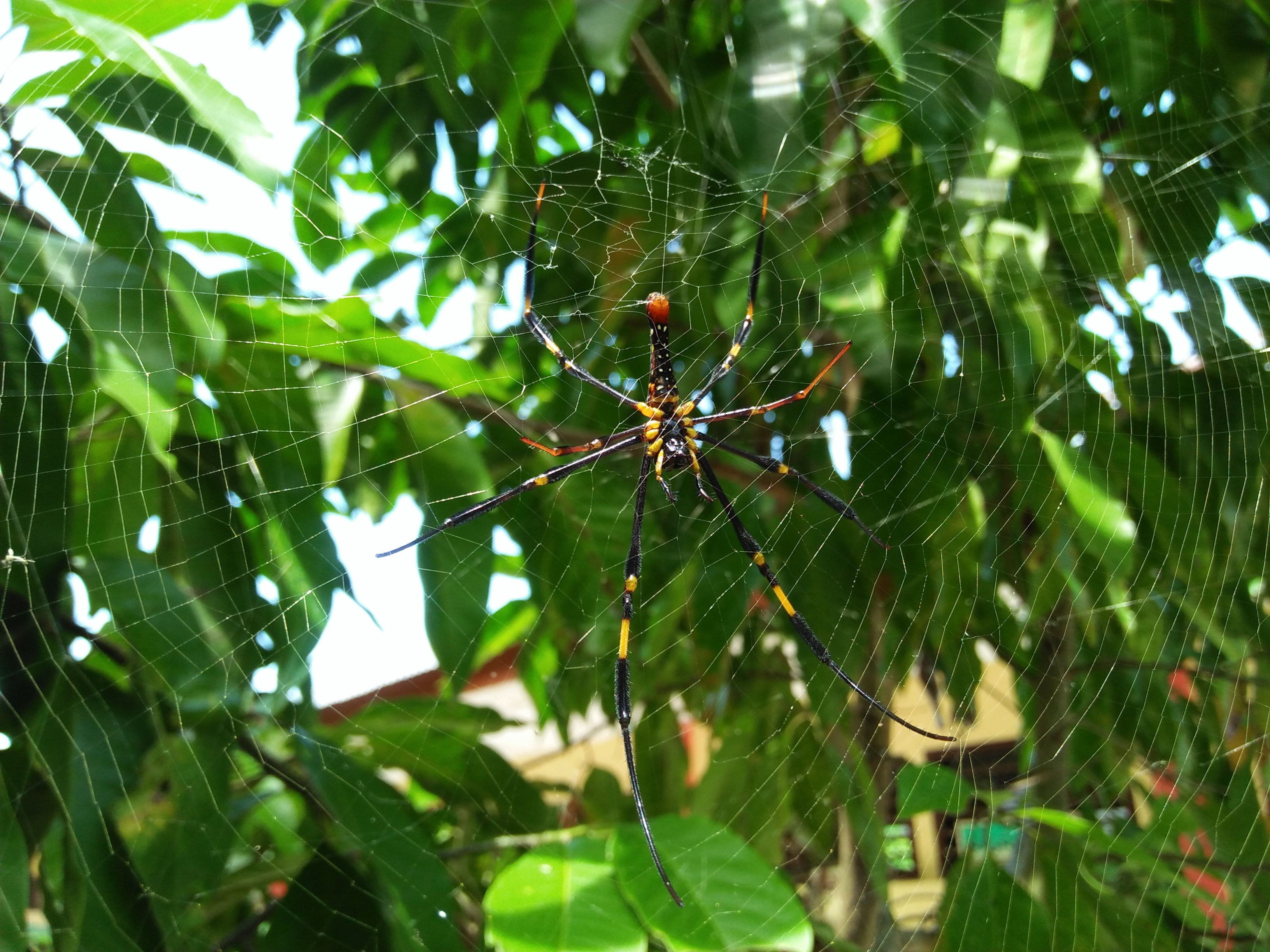Beautiful profit spider in the tree
Laba-laba, atau disebut juga labah-labah, adalah sejenis hewan berbuku-buku dengan dua segmen tubuh, empat pasang kaki, tak bersayap, dan tak memiliki mulut pengunyah. Semua jenis laba-laba digolongkan ke dalam ordo Araneae. Laba-laba merupakan hewan pemangsa (karnivora), bahkan kadang-kadang kanibal. Mangsa utamanya adalah serangga. Hampir semua jenis laba-laba, dengan perkecualian sekitar 150 spesies dari suku Uloboridae dan Holarchaeidae, dan subordo Mesothelae, mampu menginjeksikan bisa melalui sepasang taringnya kepada musuh atau mangsanya. Meski demikian, dari puluhan ribu spesies yang ada, hanya sekitar 200 spesies yang gigitannya dapat membahayakan manusia. Tidak semua laba-laba membuat jaring untuk menangkap mangsa, akan tetapi semuanya mampu menghasilkan benang sutera—yakni helaian serat protein yang tipis namun kuat—dari kelenjar (disebut spinneret) yang terletak di bagian belakang tubuhnya. Serat sutera ini amat berguna untuk membantu pergerakan laba-laba, berayun dari satu tempat ke tempat lain, menjerat mangsa, membuat kantung telur, melindungi lubang sarang, dan lain-lain. 
The spider, also called the spider, is a kind of bookish animal with two body segments, four pairs of legs, no wings, and no chewing mouth. All types of spiders are classified into the order of Araneae. Spiders are predators (carnivores), sometimes even cannibals. Its main prey is insects. Almost all types of spiders, with the exception of about 150 species from the Uloboridae and Holarchaeidae tribes, and the Mesothelae subordo, are able to inject through a pair of fangs to their enemies or prey. However, out of tens of thousands of species, only about 200 species have bites that can harm people. Not all spiders make a net to catch prey, but all are capable of producing silk threads-a thin but powerful strand of protein fiber-from a gland (called a spinneret) located at the back of its body. These silk fibers are very useful for helping the movement of spiders, swinging from one place to another, trapping the prey, making egg bags, protecting the nest hole, and so on.